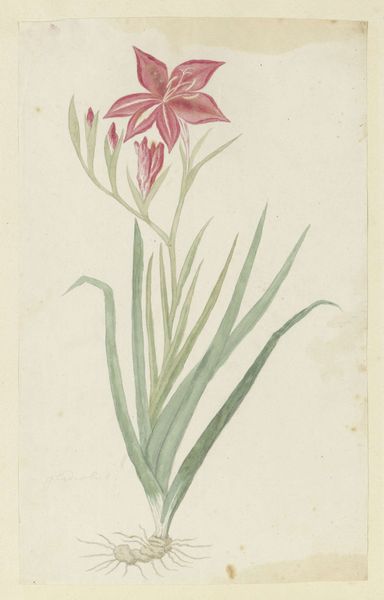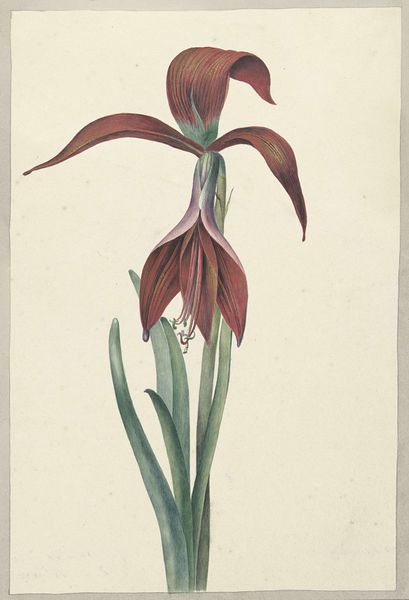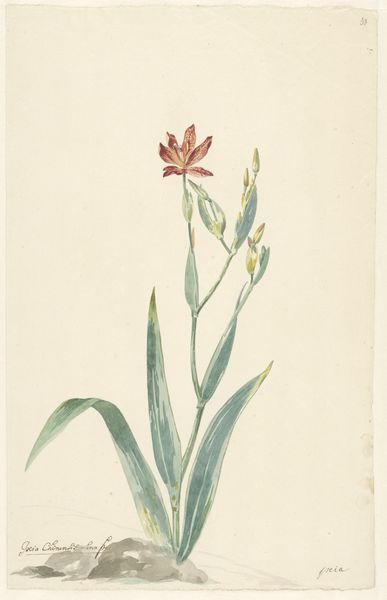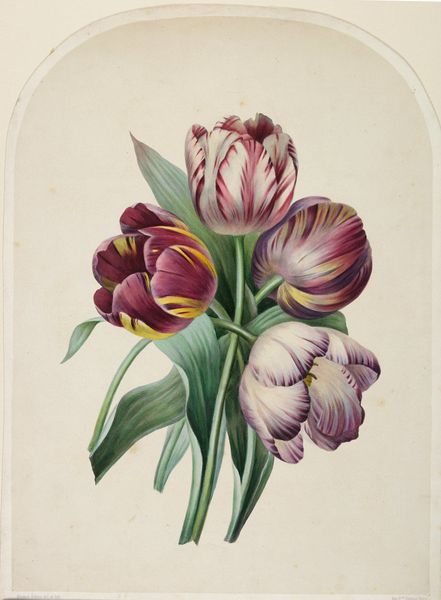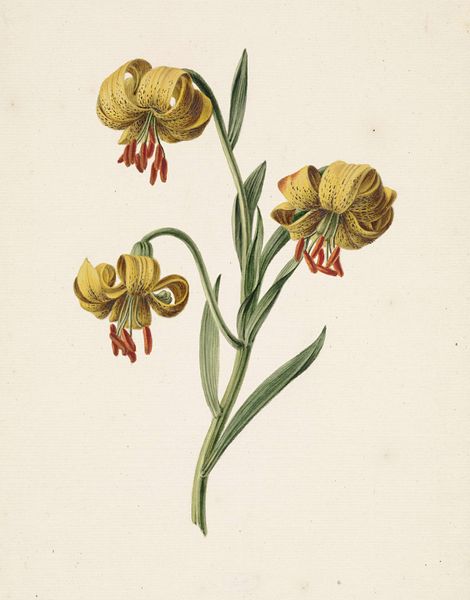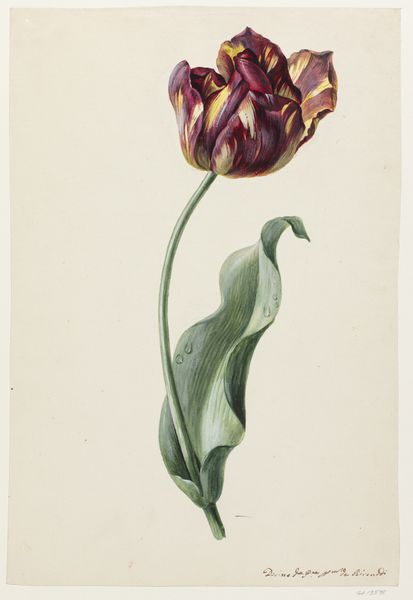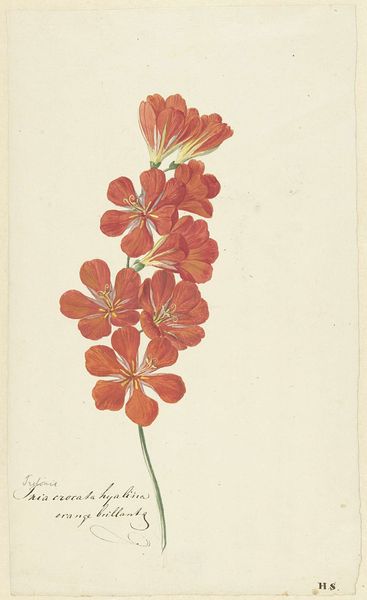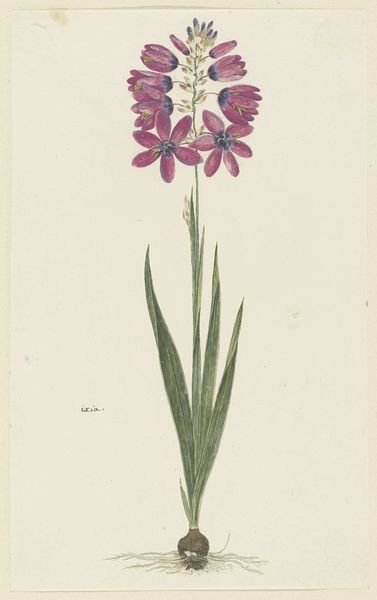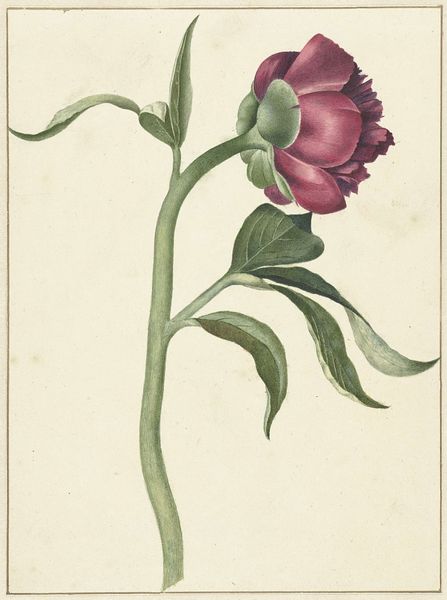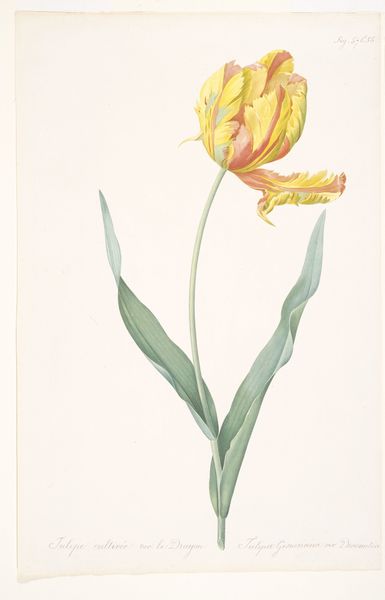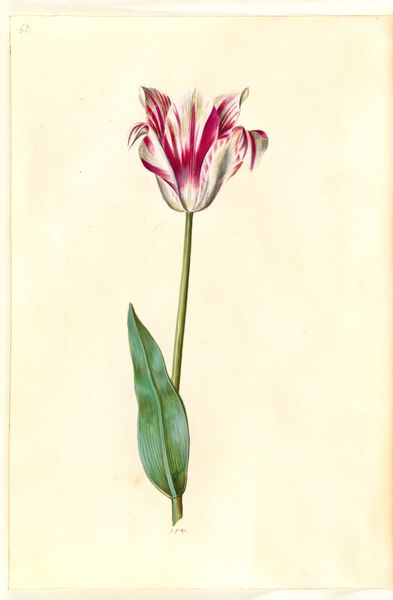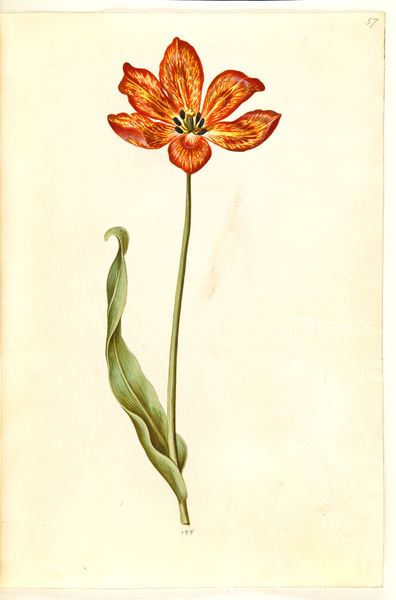
Dimensions: height 344 mm, width 259 mm
Copyright: Rijks Museum: Open Domain
Editor: So this watercolor painting, titled "Bloem met de naam Ferraria Tigrina," possibly from 1817 by C.J. Kruimel, depicts a tiger flower. The detail is amazing, almost photographic, but it feels so detached and clinical. What do you make of this meticulous rendition? Curator: The image presents a striking example of cultural fascination with the natural world. The "Ferraria Tigrina", a flower then being "discovered" by European science and colonial endeavor. What emotional or symbolic charge do you think early 19th century viewers would attach to its image? Editor: Well, I suppose it represents exotic beauty and scientific curiosity. Perhaps even the thrill of colonial expansion and access to new species. Curator: Precisely. The tiger-like spots become symbolic, almost allegorical. Note how the artist positions the flower – a single stem, isolated against the blank paper. It transforms the specimen into an emblem, laden with ideas about nature, discovery and possession. Do you think it romanticizes nature or objectifies it? Editor: That's a great question. I think it objectifies it, stripping the flower of its context. But that intense, painstaking rendering also shows an undeniable appreciation for nature’s complexities. It’s like a beautiful contradiction. Curator: Exactly. And it’s within those contradictions that cultural meaning thrives, don't you agree? Understanding those visual symbols unlocks a portal to the past. Editor: Definitely. Looking at this simple botanical illustration through the lens of its symbolic meaning has totally changed how I see it.
Comments
No comments
Be the first to comment and join the conversation on the ultimate creative platform.
